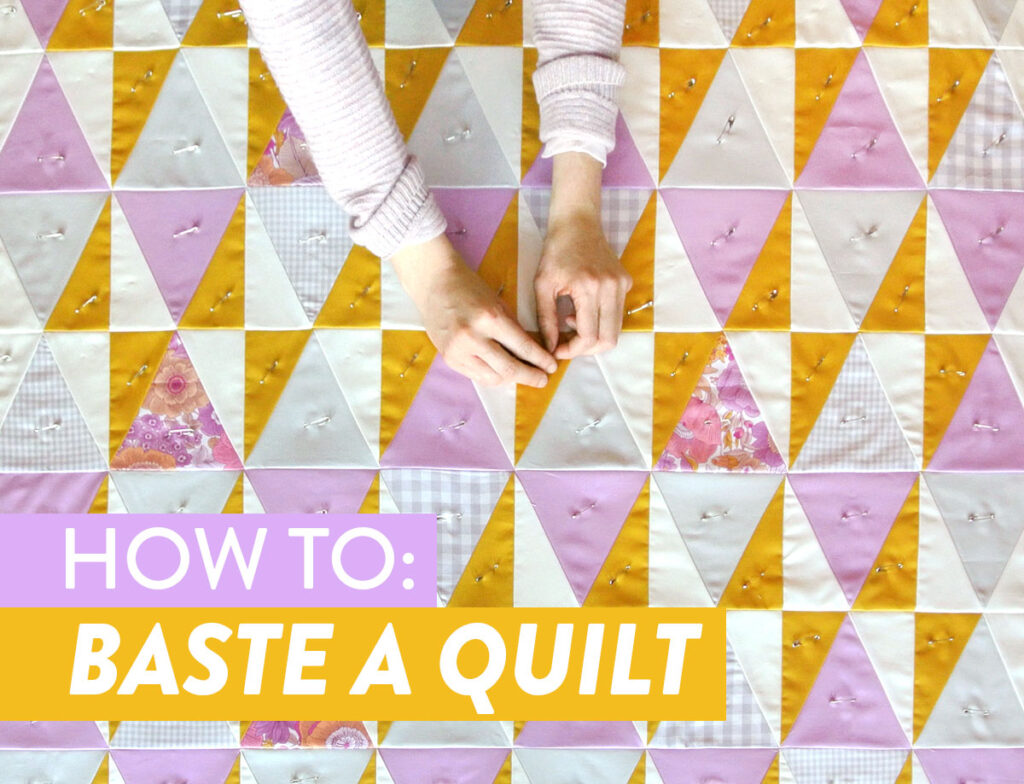Are you looking for a quick and easy way to baste a quilt without the hassle of pins or needles? Then spray basting may be the perfect solution for you. In this article, we will provide a step-by-step guide on how to spray baste a quilt, so you can achieve professional quilting results. With the right techniques, you’ll be able to create beautiful quilts in no time!
What is Quilt Basting and What are the Benefits?
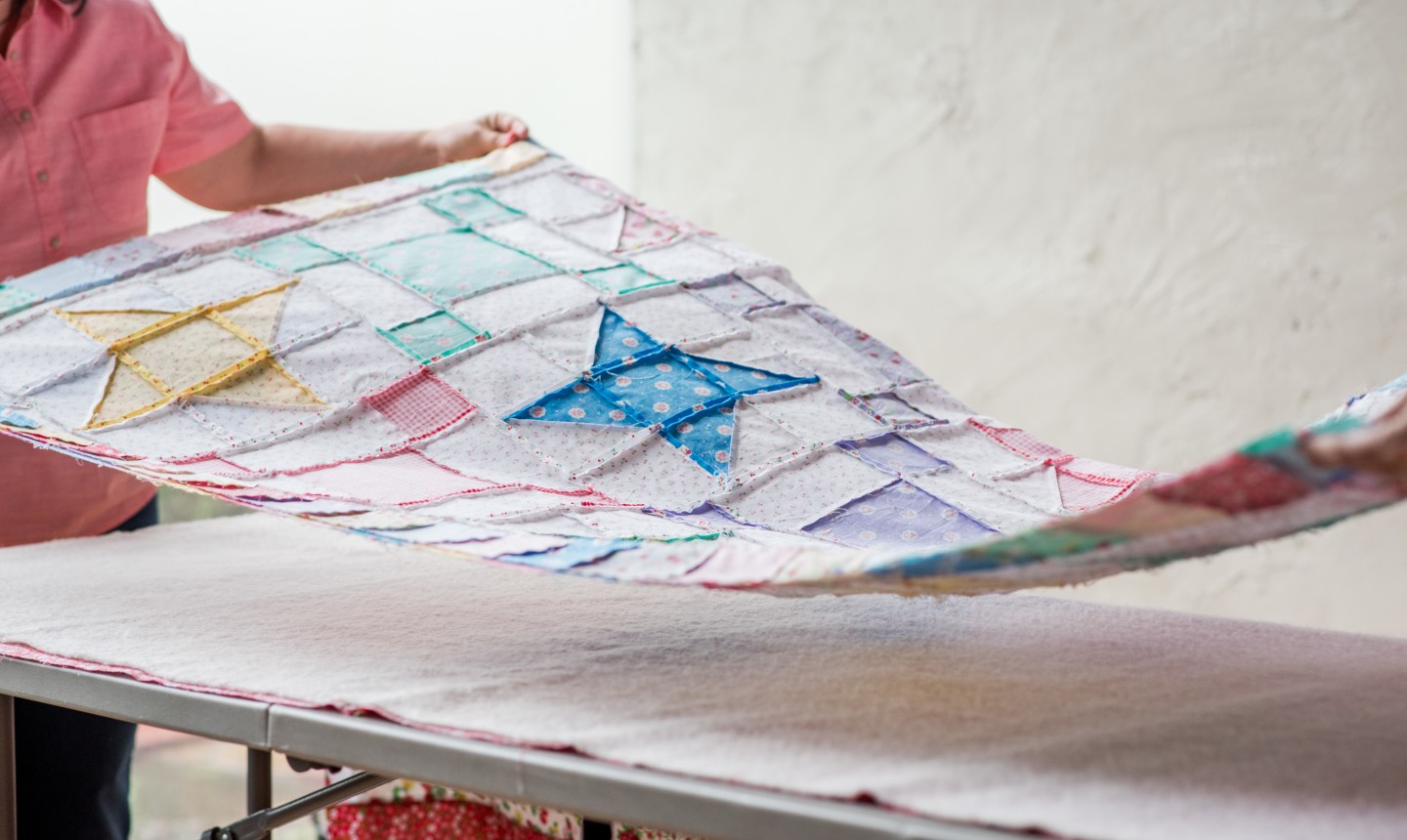
Quilt basting is a process that helps hold the layers of a quilt together in preparation for quilting. It involves attaching the quilt top to the batting and backing with either pins, thread, or spray. Basting helps to keep the quilt top, batting, and backing aligned properly during the quilting process.
The benefits of quilt basting include:
More Accuracy: When the quilt layers are basted together, the quilter can have more accuracy when quilting since the layers will remain in place.
Less Shifting: Basting the layers of a quilt together helps to keep the quilt from shifting during the quilting process.
Easier Quilting: Quilt basting helps make the quilting process easier by making it easier to maneuver the layers of the quilt.
Time Savings: Basting a quilt can save time in the long run as it eliminates the need to re-align the layers of the quilt every time a quilting stitch is made.
Spray basting is a popular and convenient way to baste a quilt for hand quilting. It is easy to use and can save time and effort in the quilting process.
Overview of the Process of Spray Basting a Quilt
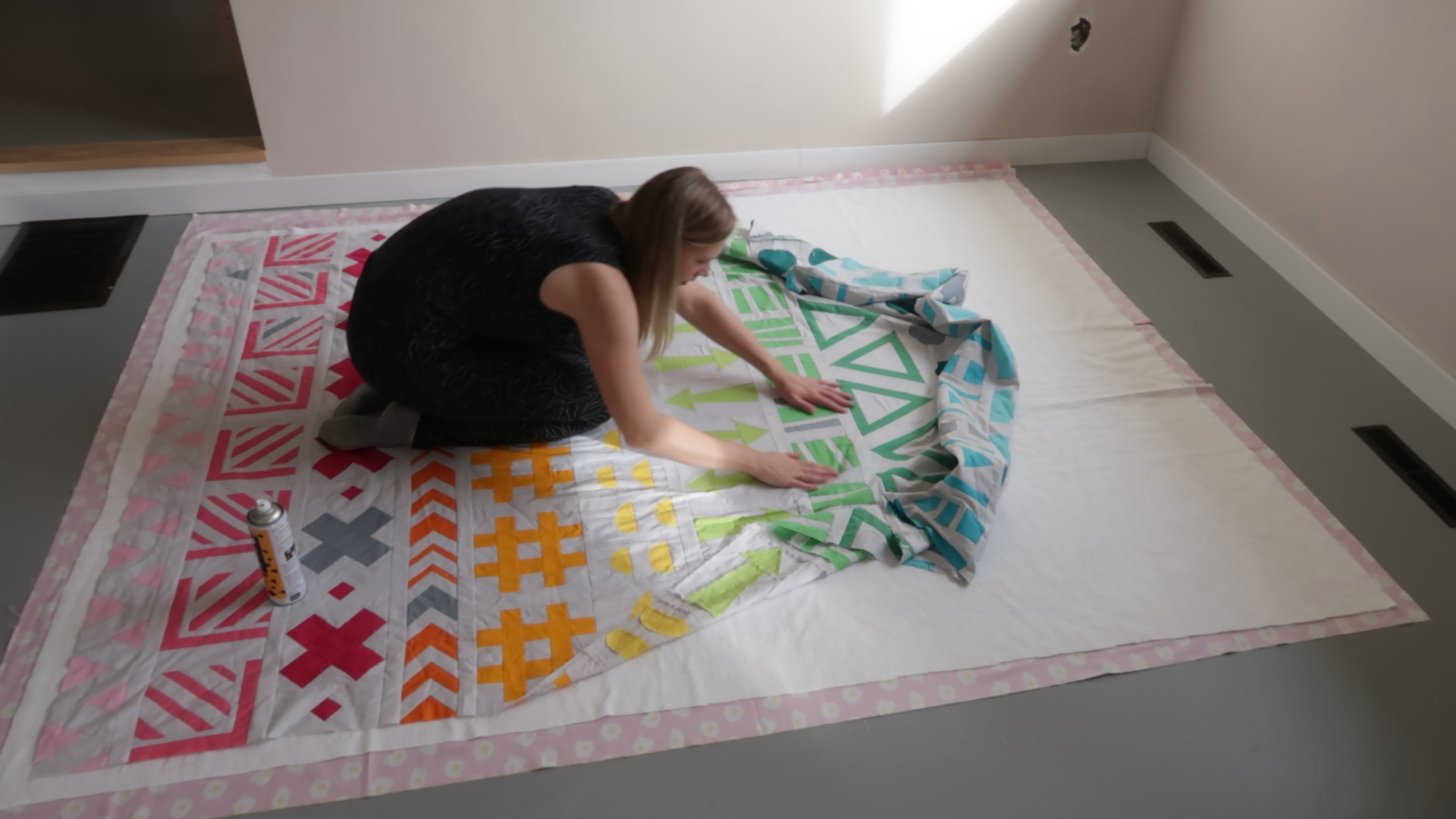
Prepare the Quilt
Iron the top and backing fabrics before layering. Remove any wrinkles or creases. Cut the batting and backing fabric to the same size.
Prepare the Spray Basting Adhesive
Shake the can of spray adhesive for at least one minute before use.
Apply the Basting Spray
Spray the adhesive in an even layer, taking care not to saturate the fabric. Apply a thin, even layer on the backing fabric and batting.
Position the Batting
Position the batting on the backing fabric, making sure to smooth out any wrinkles or creases.
Sandwich the Quilt Layers
Lay the quilt top right side up on top of the batting and backing fabric. Smooth out the quilt top, making sure to remove any wrinkles or creases. Spray the quilt top evenly with the spray basting adhesive. Smooth the quilt top once again to ensure full adhesion. Now the quilt top, batting and backing fabric are sandwiched together.
Tips for Easier Basting
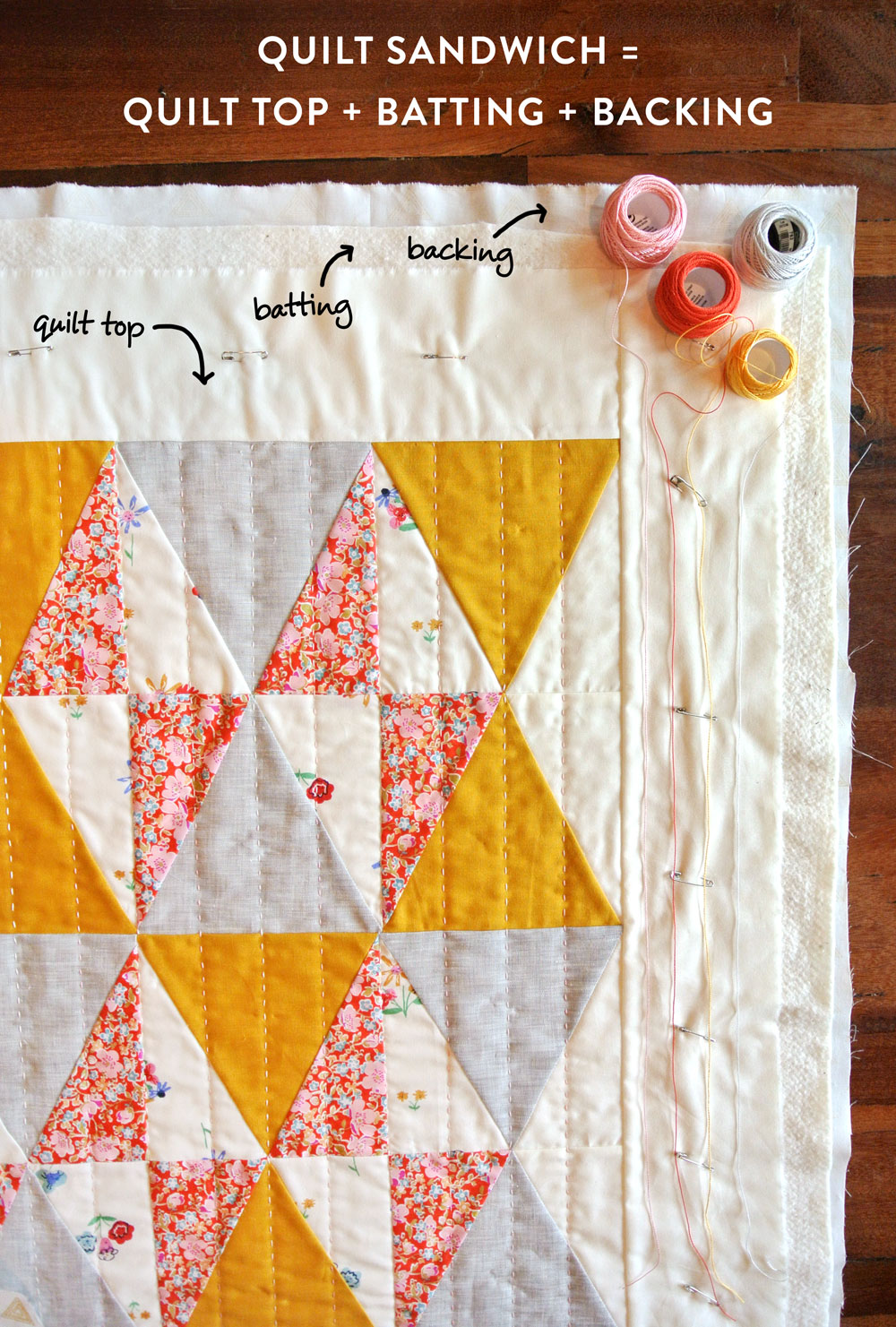
Use a Utility Knife for Cutting
Using a utility knife to cut the batting is essential for ensuring that the quilt basting spray adheres properly. A utility knife offers greater control than scissors, which makes it easier to cut the batting to the exact size and shape desired. Make sure to only cut one layer at a time and to use a fresh blade for best results.
Use a Rotary Cutter for Cutting
For larger projects, a rotary cutter can be used to cut the batting with greater ease and accuracy. This type of cutter makes it easy to cut large, uniform pieces that are the same size and shape. Make sure to use a sharp blade for best results and to have a self-healing cutting mat underneath the batting to protect the surface of the quilt.
Use a Spray Bottle for Applying the Adhesive
Using a spray bottle to apply the quilt basting spray can help ensure even coverage and help avoid any clumping. It is important to ensure that the spray bottle is correctly calibrated and that the nozzle is not set too high, as this can cause the adhesive to be too watery. The adhesive should be applied in thin coats to ensure that it lasts as long as possible – typically, how long does quilt basting spray last will depend on the fabric and the adhesive used.
How Long Does Quilt Basting Spray Last?
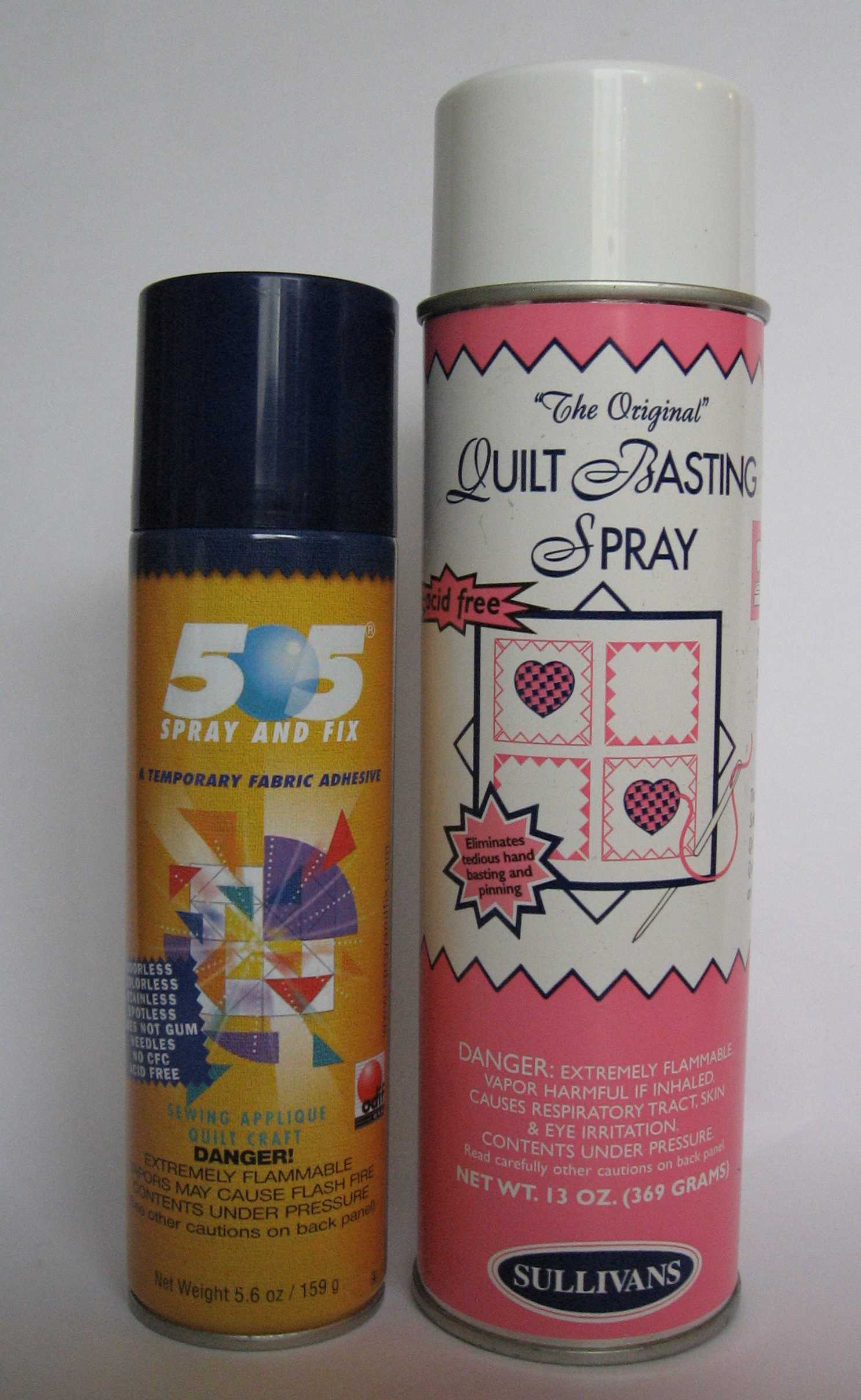
Basting spray can last from several days to several weeks, depending on the type of spray used. The adhesive strength of the spray can help determine how long it will last. Generally, the longer the spray lasts, the more expensive it will be.
To help make your basting spray last longer, here are some tips for extending its life:
- Store your spray in a cool, dry place. Heat, humidity, and direct sunlight can cause the spray to degrade and lose its adhesive strength over time.
- Keep your basting spray upright. This helps prevent the adhesive from settling at the bottom of the can, which can weaken its strength.
- Clean the nozzle of the spray can frequently. This helps ensure that the adhesive is dispensed evenly and the can will last longer.
- Use the basting spray sparingly. This will help ensure that the adhesive lasts as long as possible.
By following these tips, you can help ensure that your basting spray is used effectively and efficiently when it comes to how to use basting spray on a quilt.
How to Use Basting Spray on a Quilt?
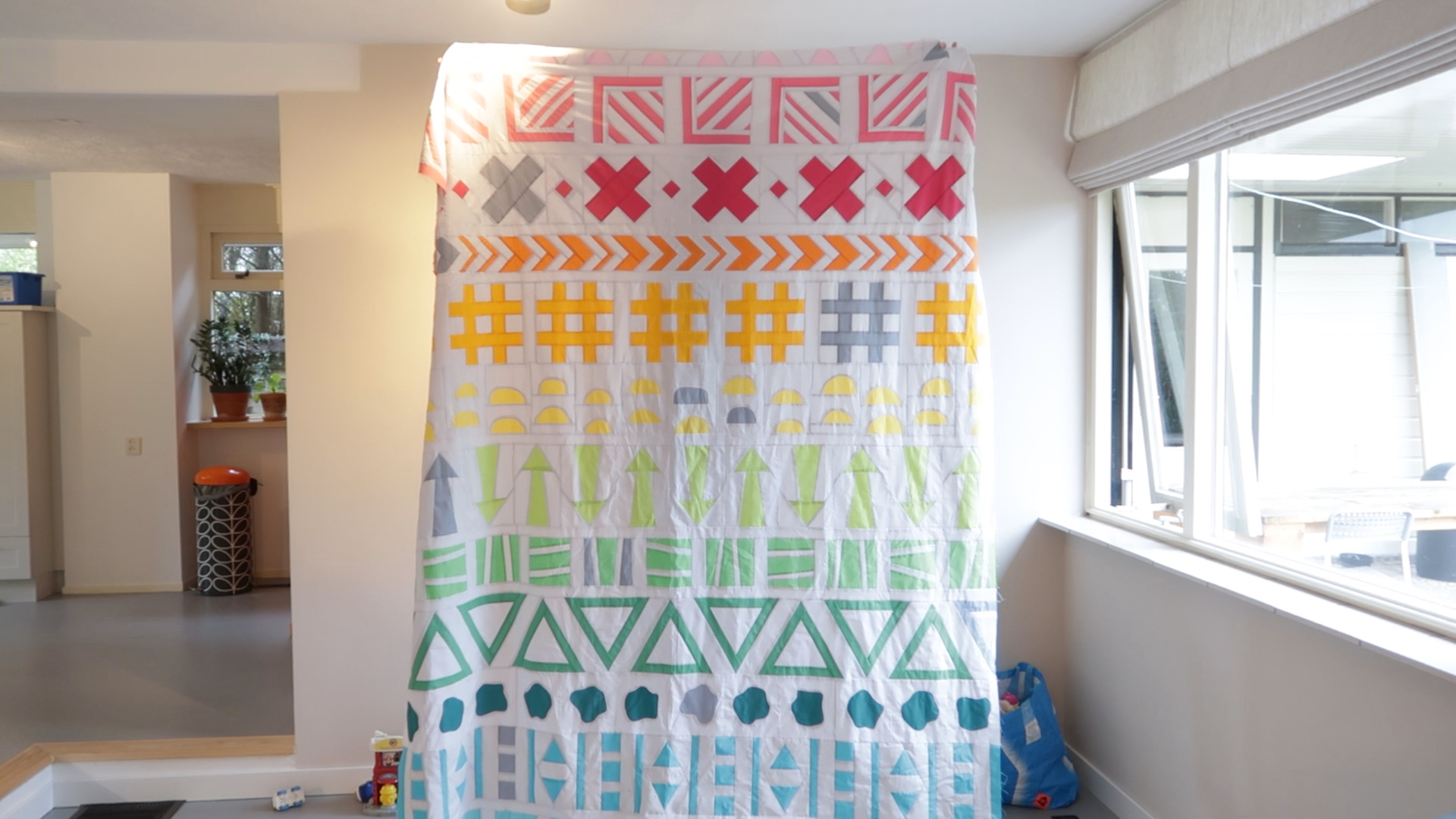
Basting spray is a quick and easy way to baste a quilt. It is much simpler than pinning or thread basting and can provide a secure bond that will keep the layers of your quilt in place while quilting. Here is a step-by-step guide to using basting spray on a quilt.
What You Need:
| Basting Spray | Painter’s Tape |
| Rotary Cutter | Quilt Batting |
| Quilting Ruler | Quilt Top |
| Iron | Quilt Backing |
Instructions:
- Lay Out Your Fabrics: Place the quilt backing fabric on a flat surface and smooth it out. Place the batting on top of the backing fabric and smooth it out. Place the quilt top fabric on top of the batting and smooth it out.
- Secure the Edges: Use painter’s tape to secure the edges of the quilt fabric, batting, and backing fabric together. This will help keep the layers in place while you are spraying the basting spray.
- Cut Excess Fabric: Use a rotary cutter and quilting ruler to trim the quilt fabric, batting, and backing fabric so that all three layers are the same size.
- Spray Baste: Carefully spray the basting spray onto the quilt fabric. Make sure to spray evenly so that the layers are secured together. Allow the basting spray to dry.
- Press the Quilt: Use an iron to press the quilt layers together. This will help to further secure the layers together.
Using basting spray to baste a quilt is a quick and easy way to secure the layers of your quilt together. With just a few simple steps, you can easily spray baste a quilt and be ready to start quilting!
How to Quilt Spray Easily?
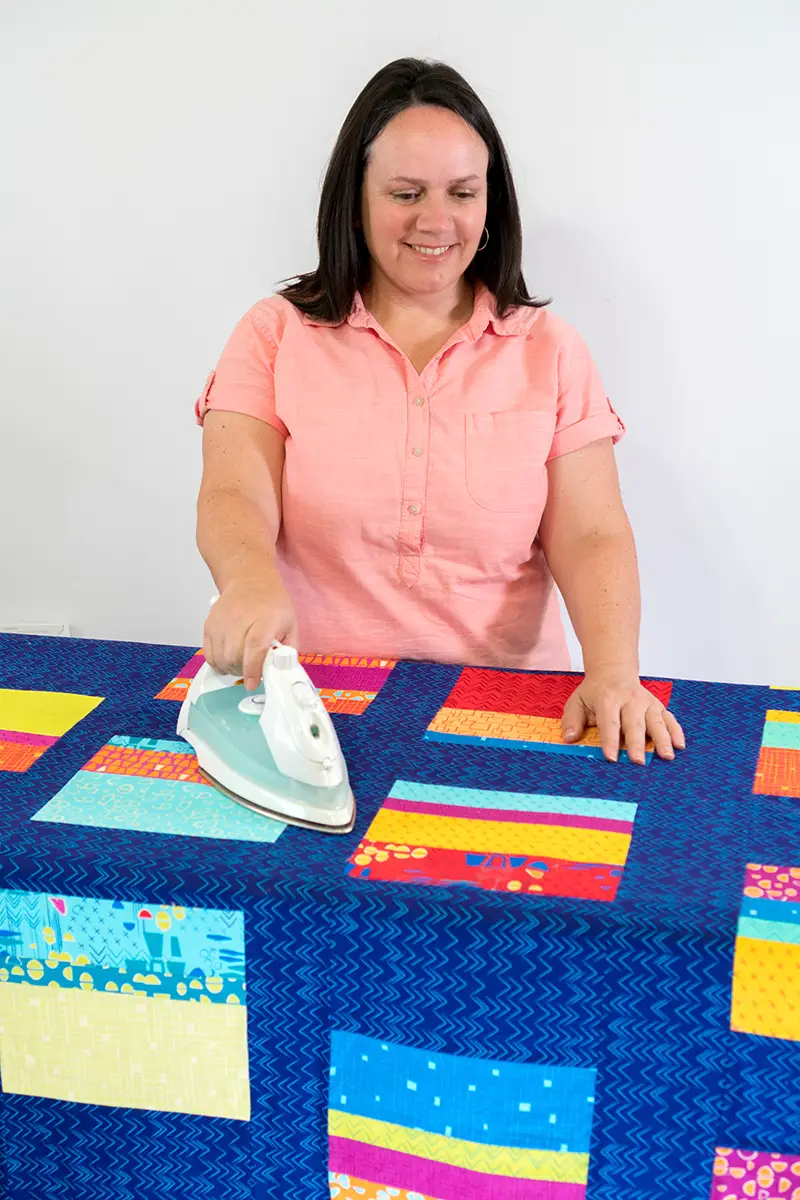
Spray basting is an easy way to adhere batting to the quilt top and bottom layers without the need for pins or needle basting. It is quick, easy, and makes the quilting process much simpler.
- Prepare the quilt – lay out the quilt top, batting and backing on a flat surface. Make sure the backing is smooth and not wrinkled as this will interfere with the basting.
- Secure the layers – use masking tape or safety pins to secure the layers of the quilt. This will prevent any shifting while you are spraying your adhesive.
- Spray the adhesive – use an aerosol spray adhesive specifically designed for quilt adhesives. Hold the can 10-12 inches away from the quilt and spray an even, light coat over the entire quilt.
- Carefully smooth the layers – use your hands to carefully smooth out the layers, making sure the batting is evenly adhered to the quilt top and backing.
- Allow the adhesive to dry – let the adhesive dry for at least 10 minutes before quilting. This allows the adhesive to fully cure and adhere the batting securely.
Spray basting is an easy and efficient way to adhere batting to the quilt top and bottom layers without the need for pins or needle basting. It is a great way to quickly and easily prepare your quilt for quilting, and will make the entire process much simpler.
How to Spray Adhesive the Batting on a Quilt?
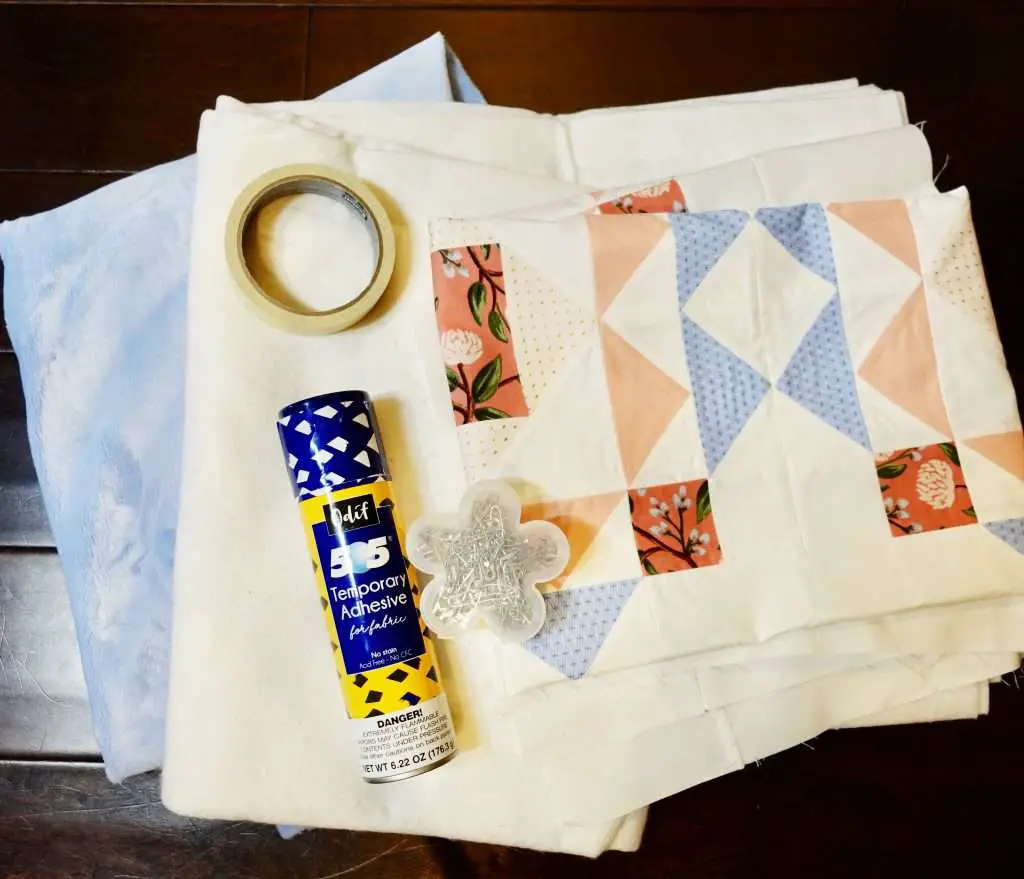
Spray basting is a quick and easy alternative to thread basting. It takes only a few minutes to spray baste a quilt, compared to the several hours it takes to thread baste a quilt.
Materials:
- Quilt top
- Batting
- Spray adhesive
Instructions:
- Lay the quilt top on a flat surface.
- Lay the batting on top of the quilt top, making sure the batting is laid out evenly.
- Spray the adhesive on the quilt top, following the directions on the adhesive can.
- Smooth out the batting, making sure it is evenly adhered to the quilt top.
Once all the batting is adhered to the quilt top, you are ready to quilt your quilt. Spray basting is a great alternative to thread basting and is much quicker and easier.
How Long Does It Take to Thread Baste a Quilt?
Thread basting a quilt is one of the most popular methods of basting a quilt. Thread basting a quilt is time consuming, but it is an effective way to baste a quilt.
So, how long does it take to thread baste a quilt?
It can take anywhere from one hour to several hours to thread baste a quilt, depending on the size of the quilt. A large quilt can take up to eight hours to thread baste.
- For a small quilt, it can take about one hour to thread baste.
- For a medium-sized quilt, it can take up to three hours to thread baste.
- For a large quilt, it can take up to eight hours to thread baste.
Thread basting a quilt is a labour-intensive process, but it is a reliable way to baste a quilt and ensure that the quilt will be properly quilted.
Frequently Asked Questions
What kind of Spray Adhesive Should I Use?
For spray basting a quilt, an aerosol adhesive spray is generally the best choice. Aim for one that is solvent-free with a repositionable bond. This will allow for easy repositioning of fabric pieces if needed. Make sure to use the spray in a well-ventilated area.
How close should I keep the spray nozzle to the quilt top?
- Keep the nozzle 6-8 inches away from the quilt top when spraying.
- Focus on one small area of the quilt at a time, and keep the spray nozzle moving as you spray.
- If the nozzle is too close to the quilt, the adhesive will saturate the fabric and can cause it to stick to the ironing board.
- To ensure an even coverage of adhesive, spray in a zig-zag pattern across the quilt top.
- Do not spray directly at the seams. Instead, spray a few inches away from the seam and let the spray drift onto the seam.
How long should I wait for the spray adhesive to dry before quilting?
The spray adhesive should be left to dry for a minimum of one hour before beginning to quilt. It is best to wait until the adhesive is completely dry, or until the fabric is no longer tacky to the touch. This will ensure that the quilt layers do not move during the quilting process.
What Size Quilt Can I Spray Baste?
Spray basting can be used for any quilt size, as long as the quilt is able to be laid out flat and have the spray basting adhesive applied. It is important to ensure the quilt is well secured to the surface it is laid out on, so it does not slip or move during the spray basting process. For larger quilts, it is best to spray baste in sections to ensure that the adhesive is applied evenly.
Is it Safe to Use a Spray Baste on a Fabric that May be Prone to Bleeding?
It is important to conduct a fabric test before using a spray baste on any fabric that may be prone to bleeding. To do the test, spray a small amount of the baste onto a swatch of the fabric in question and leave it for 24 hours. If the fabric bleeds, do not use the baste on that fabric as it could potentially cause staining. If the fabric does not bleed, then it is safe to use the spray baste.
Conclusion
Spray basting is a quick and easy way to baste a quilt and get professional results. It is especially useful for larger quilts that would be difficult to baste with pins. When done correctly, it can save time and effort in the quilting process. With a few simple steps and a little bit of practice, you can easily master the art of spray basting a quilt.
